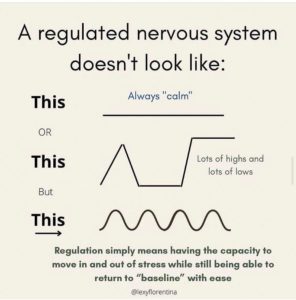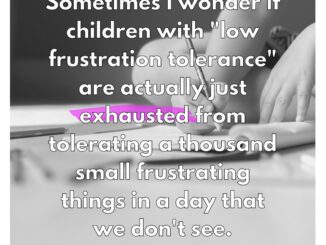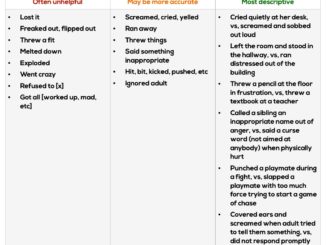I see children on my school OT caseload who are three, and four, and five, and six. They are behaving in all sorts of inconvenient ways for traditional schooling.
They touch things when they pass by them in the hallways. They stand up from chairs and move around the room, or they fall out of their chairs to the floor, or they pretend to drop a pencil and fall and chase after it. They play with anything on their desk and anything in their pencil box and anything they’re wearing and anything they can get their hands on. Their body knows that playing is how they ought to be learning.
When they are sad, they howl with sadness and throw themselves down. When they are happy they scream with delight or run around the room. When they are excited they are bursting out of their body with joy. When they are afraid they bolt from what it is that scares them, or tuck themselves under a desk, or weep. Their body is feeling and they are listening to those feelings. The adults want them to be calm, calm, calm. To use their calm voices and be big kids and not disrupt class and follow the rules.
I see children on my school OT caseload who are eleven, and twelve, and thirteen. They don’t know how to talk about what they are feeling. They don’t know how to make their brain wander back from wherever it has wandered off to, to learn from a lecture. They know how to keep their hands still, and walk in a line, and be unobtrusive in class. They know how to ignore what they’re feeling to earn an arbitrary reward or avoid an arbitrary punishment from an adult. They don’t know what they are feeling. They don’t know why they react so explosively when they are angry, or why their mind goes into a panic when they deviate from routine. They don’t have the words for it. They don’t have the tools to cope with it. But they know how to look convenient and quiet and calm. Most of the time.
Bodies aren’t always calm. Calm isn’t always best. Calm isn’t the same thing as regulated.




